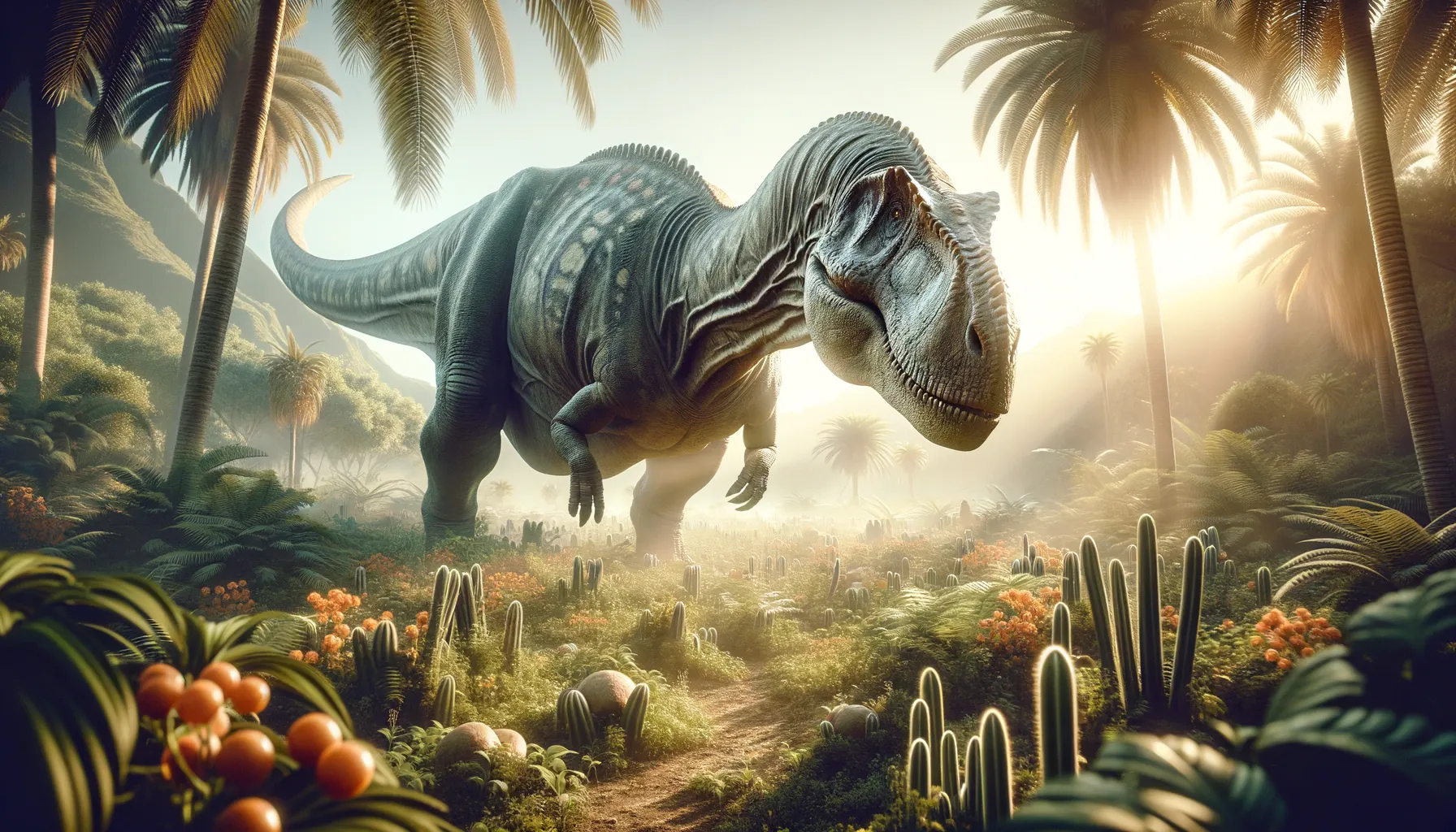
Triunfosaurus
A giant from the ancient Brazilian landscape.
Period
Cretaceous
Length
Estimated to be around 70 feet long.
Height
Approximately 12 to 15 feet at the shoulder.
Weight
Estimated between 10 to 15 tonnes.
Triunfosaurus was a massive sauropod dinosaur that roamed the Earth during the Cretaceous period. Its discovery in Brazil added more information about the diversity of dinosaurs in South America. Known for its large size and long neck, Triunfosaurus is believed to have been a herbivore, feeding on a variety of plant life that existed at the time. Its fossils provide valuable insights into the region's prehistoric ecology.
Diet
Triunfosaurus was a herbivore. It likely fed on a variety of plants, including ferns, conifers, and possibly flowering plants that were emerging during the Cretaceous.
Hunting
As a herbivore, Triunfosaurus did not hunt for prey. Instead, it foraged for plants using its long neck to reach vegetation that other dinosaurs could not access.
Environmental challenges
Triunfosaurus lived in a changing environment with developing plant species during the Cretaceous. It faced challenges from shifting climates and potential volcanic activity, common during this period. These changes would have influenced its food sources and habitat availability.
Speed
Unknown, but likely slow due to its size.
Lifespan
Estimated to be around 70 to 100 years.
First discovery
Found in 2017 in Brazil by a team of Brazilian paleontologists.
Fun Facts
- Triunfosaurus was a large, long-necked dinosaur that belonged to the group of sauropods.
- It was discovered in the Triunfo Basin in Brazil, which is where its name comes from.
- Triunfosaurus lived during the Early Cretaceous period, about 125 million years ago.
- This dinosaur is known for its distinctive, strong neck, which helped it reach high vegetation for feeding.
- Triunfosaurus is relatively new to science, with its discovery being announced only in 2018.
- The name 'Triunfosaurus' reflects both its location of discovery and its 'triumph' as a remarkable find.
- Although it shares features with other sauropods, Triunfosaurus has unique characteristics that help scientists understand sauropod evolution better.
Growth and Development
Triunfosaurus likely experienced rapid growth phases in its early life to reach maturity quickly, a characteristic seen in many large dinosaurs. As it aged, its growth would have slowed, allowing it to live for several decades. Understanding its bone structure can offer clues to its growth patterns.
Habitat
Triunfosaurus inhabited what is now known as Brazil, potentially living in floodplain environments or near rivers. This area would have provided lush vegetation and a steady water supply. The climate during the Cretaceous period was warm and possibly seasonal, affecting the types of plants available.
Interaction with other species
Triunfosaurus likely lived alongside other dinosaur species, both predators and fellow herbivores. Its large size would have deterred many predators, and it might have had mutualistic relationships with smaller herbivores. Interaction among herbivores may have involved competition for food.
Natural lifespan
In favorable conditions, Triunfosaurus might have lived up to a century.
Reproduction
Triunfosaurus likely reproduced by laying eggs, similar to other sauropods. Nests may have been built in safe, concealed areas to protect the young from predators. Parental care is uncertain, but hatchlings would have needed to grow rapidly to reach a size less vulnerable to predation.
Social behaviour
Although specific social behaviors of Triunfosaurus are unknown, it might have traveled in groups or herds for protection. Herding could have provided benefits such as shared warning calls against predators and communal nesting sites.
Fossil locations
The first and only known fossils were found in Brazil, deepening our understanding of the distribution of dinosaurs across South America. These discoveries continue to offer valuable insights into the ecosystems of prehistoric times in this region.
